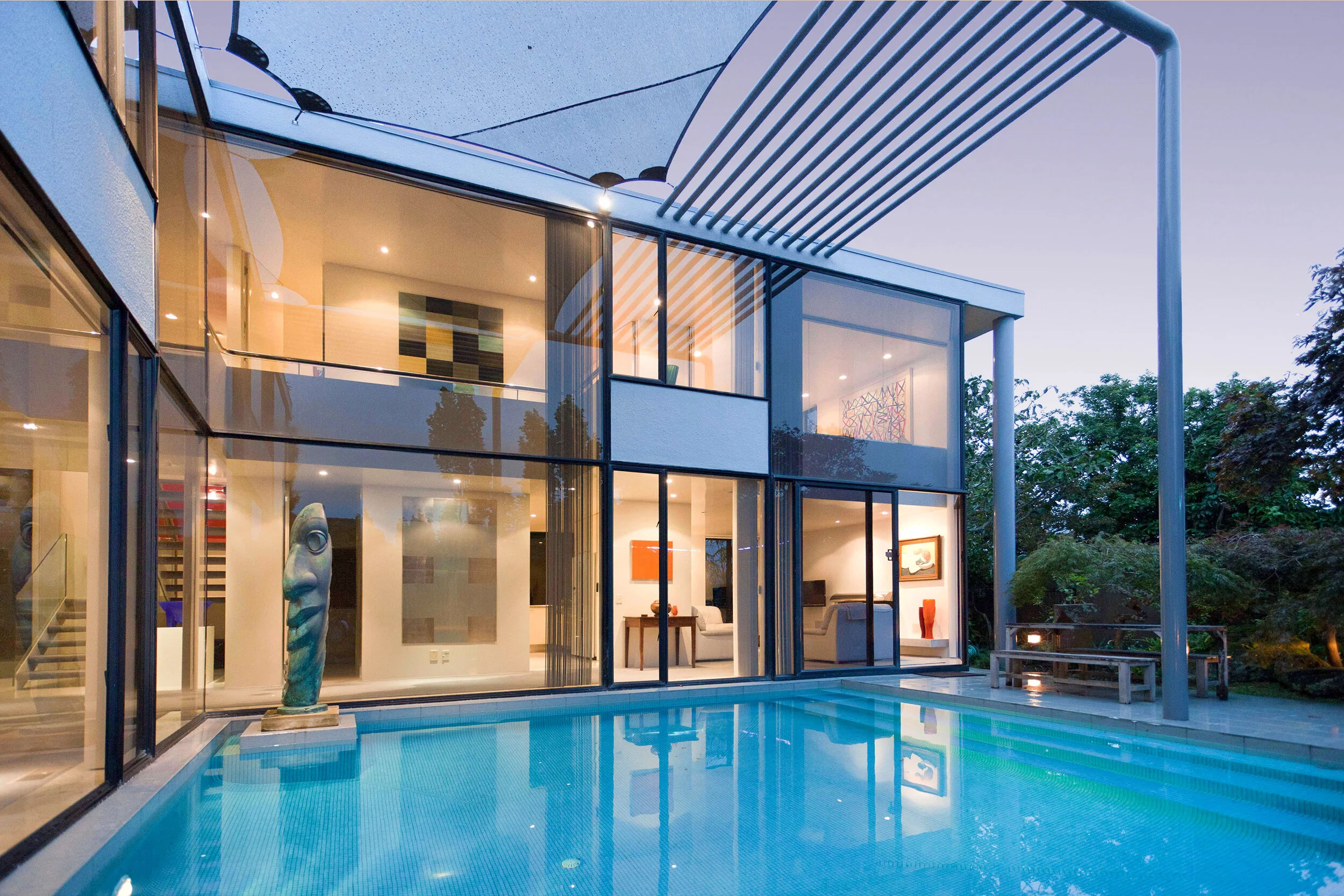Ron Sang
11 July 1938 - 11 June 2021
Ron Sang is a Registered Architect with over 50 years of experience, many awards and hundreds of buildings to his credit. A long standing patron of the arts, Ron is also the publisher of a series of highly regarded art books, showcasing New Zealand artists.
Architect Ron Sang, patron of the arts, leaves a monumental legacy
New Zealand architecture has lost a legend – architect Ron Sang ONZM passed away peacefully at his home on Friday, June 11, 2021, aged 82.
The multi award-winning Auckland architect and long-time patron of New Zealand art had an extraordinary career spanning 54 years and more than 400 buildings.
The NZIA Te Kāhui Whaihanga president, architect Judi Keith-Brown, said Sang’s contribution to New Zealand architecture and to the arts had been immeasurable, and was formally recognised in 2000, when he became an Officer of the New Zealand Order of Merit.
“Ron was a real gentleman and an outstanding architect,” Keith-Brown said. “I recall visiting the phenomenal Brake House a few years ago with Californian architect Barbara Bestor. We were so moved by his work, the home’s beauty and the way it appeared to float in the Titirangi bush.
“Ron’s kindness and generosity, and his ongoing contribution to architecture and the arts will be sorely missed.”
The Brake House in Titirangi, designed for Magnum photographer Brian Brake, has a Historic Place Category I rating. Sang famously said: “Without question, it is one of the best houses I have done. That opened many doors for me.”
Architect Ken Crosson described the Brake House as a “very seminal piece of architecture” from an architect he said was a “lovely, lovely man”.
“Ron reinterpreted architecture – there was a kind of crossover in his work. There was an Asian influence, a Kiwi influence, and a very 1970s influence. He really steered a new course in architecture.
“And he was an extraordinarily generous man who had a series of interests – it was not just about architecture. He was passionate about art and had a real eye for emerging New Zealand artists.”
Many of the architect’s houses were characterised by soaring, monumental, brightly coloured front doors. His own front door hinted at what lay beyond – a world of colour and art.
In an interview with Stuff in 2015, the architect said any spare money went on paintings, not investments. A dedicated collector, Sang famously owned paintings by most prominent New Zealand artists, including Ralph Hotere, Milan Mrkusich, Pat Hanly and Michael Smither. He told Stuff that his first serious investment, in 1975, was a Don Binney landscape that cost more than seven weeks' wages.
Sculpture and ceramics were other loves – Sang preferred to group great swaths of pots of one colour together, on white and black plinths. Visitors seldom left empty-handed. The one time I interviewed Sang at his home, he sent me away with two small green lovebirds that sat on my desk for years. Crosson said he also had one of these.
“That is a symbol of his nature and his generosity, and the way he understood how art and architecture can move you.”
The architect developed a lasting friendship with Titirangi potter the late Len Castle, owning about 100 of his pots. When Sang heard the potter only kept three for himself as he needed the income from sales, he set about producing a stunning book to record his work – a book that won the Montana Book Award and set a new benchmark for local publications.
He went on to publish books that celebrated the works of other artists, including Michael Smither, John Drawbridge, Ralph Hotere, Guy Ngan, Vincent Ward, Pat Hanly, Greer Twiss, Mervyn Williams and Robert Ellis. And he held annual exhibitions at his Epsom home to showcase the work of artists.
”Ron possibly felt our artists were not being promoted as well as they could have been, so he set about doing something about it,” Crosson said.
The architect’s background was different from most of his New Zealand contemporaries. In his earlier interview with Stuff, Sang talked about growing up in Fiji, the son of two Chinese immigrants, one of nine children. His mother ran a shop selling icecreams and toasted sandwiches, and the family lived in an uninsulated attic space. From the age of 13, he set his heart on becoming an architect.
After doing the minimum five years of study at the Auckland School of Architecture and graduating in 1964, he found work as a young graduate, then joined forces with the firm Mark-Brown and Fairhead, which evolved over many years to become Fairhead, Sang and Carnachan Architects. In 1998, Sang set up his own practice.
In 2015, at the age of 76, when he was divesting much of his art portfolio, Sang said he was looking forward to travelling: “I am not old,” he said. “But I am at that age where men in New Zealand die. I am aware of that.”
He was speaking in his favourite room of the house. “There is a lot of warmth here,” he said. “It is crammed full of stuff. It is a bit full of stuff. But there are several architects in Auckland whose houses are totally sterile. Everything is white, there are no paintings on the walls, minimal furniture.”
That was never Ron Sang and the world is all the richer for it.
Colleen Hawkes Jun 16 2021
https://www.stuff.co.nz/life-style/homed/latest/125451318/architect-ron-sang-patron-of-the-arts-leaves-a-monumental-legacy
Featured Project
2000 NZIA Local Award for Enduring Architecture
2001 NZIA Twenty Five Year for Architecture
2012 Category 1, Protected Property on the Auckland City Council Operative Places Heritage
DOCOMOMO New Zealand top 20 modern buildings, sites and neighbourhood
-
Titirangi, West Auckland 1976
Principal Architect - Ron Sang
Original photographs Lloyd Park
New photographs Frank Breslin
Video courtesy of Eric and Michelle Young
Completed over 40 years ago, this house reflects the fruitful collaboration between Sang Architects and the original owner, internationally renowned photographer Brian Brake. Structurally ambitious, with influences from the Far East, the house is deftly positioned to make the most of views near and far.
Sheathed in weathered cedar, the house straddles a wet valley and stream, the bottom of which has been developed as a pond and water garden. The house floats above the mature bush with the north deck and Tatami Room supported on a single column. The theme of working with, not against the site, has been carried through the entire design.
Internally, most areas have views of the surrounding planting or the distant view back to Auckland as their focus. Informal linking of spaces with minimal corridors speaks strongly of the sophistication of the design.
An icon of New Zealand domestic modernism, the Brake House is the result of Ron Sang’s sensitivity to the design direction provided by Brian Brake, who had lived in Asia for many years prior to building this residence. Yet this is not some sterile, museum-like space – it’s actually a very liveable home. A house that is both of its time, and yet timeless.
A Selection of Ron Sang Houses

Brake House - Enduring Architecture

Bay of Islands House

Epsom House

North Shore House

Kohimarama House

Remuera House - Award Winner

Murrays Bay House

Choice Plaza CBD - Commercial Architects Auckland

Orakei House

Orakei Phoenix Palm House

Queenstown Holiday House

Remuera Hillside House

Remuera Townhouse

St Heliers House

Woodside House

Birkenhead House


